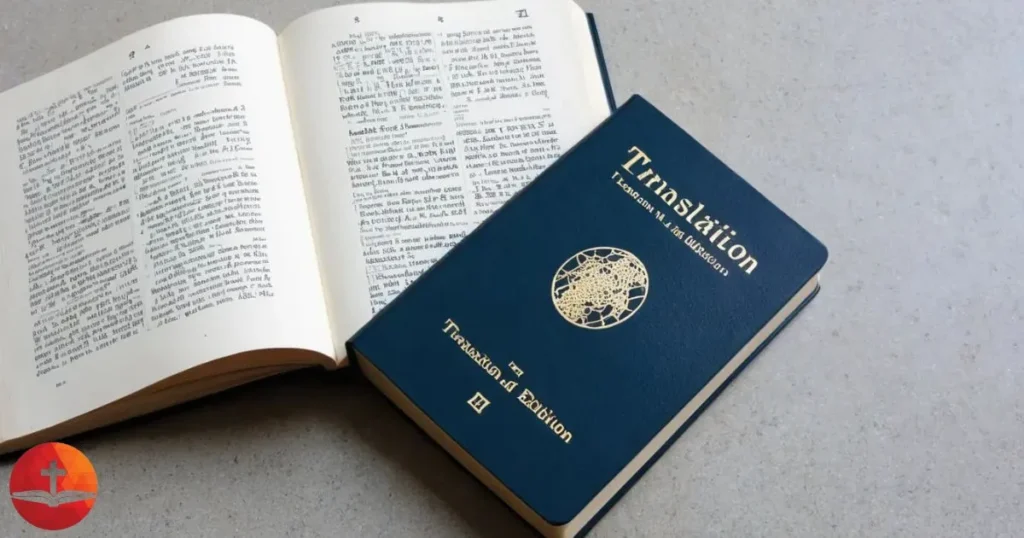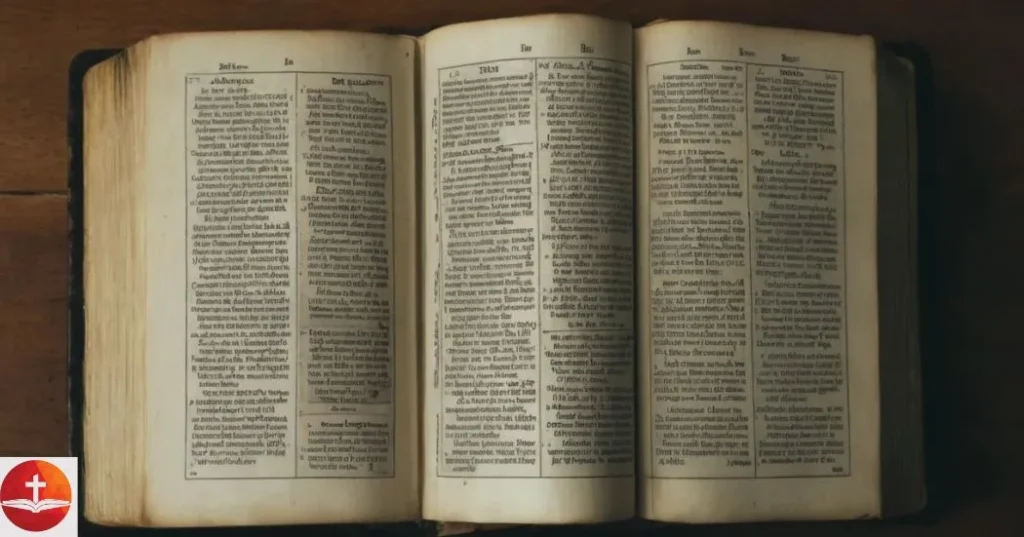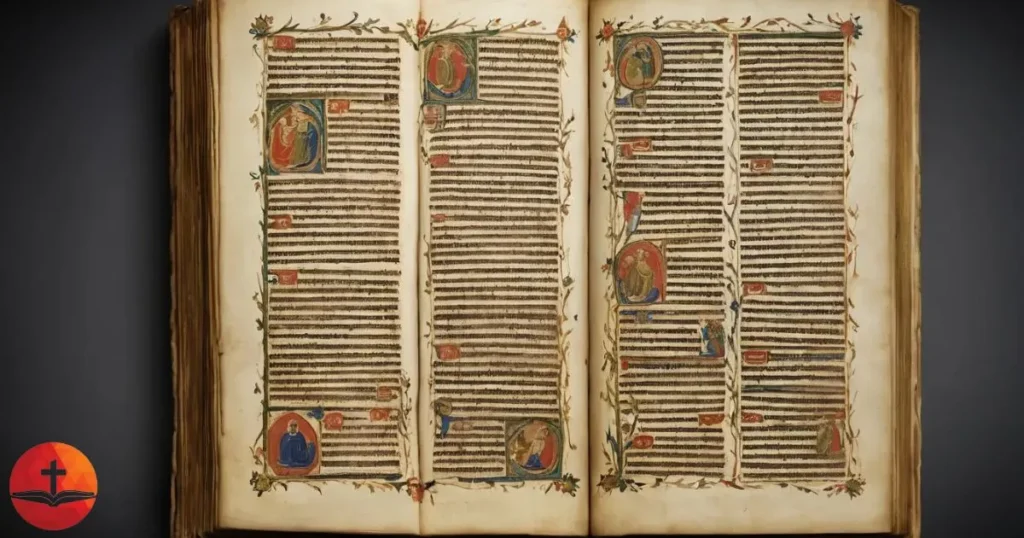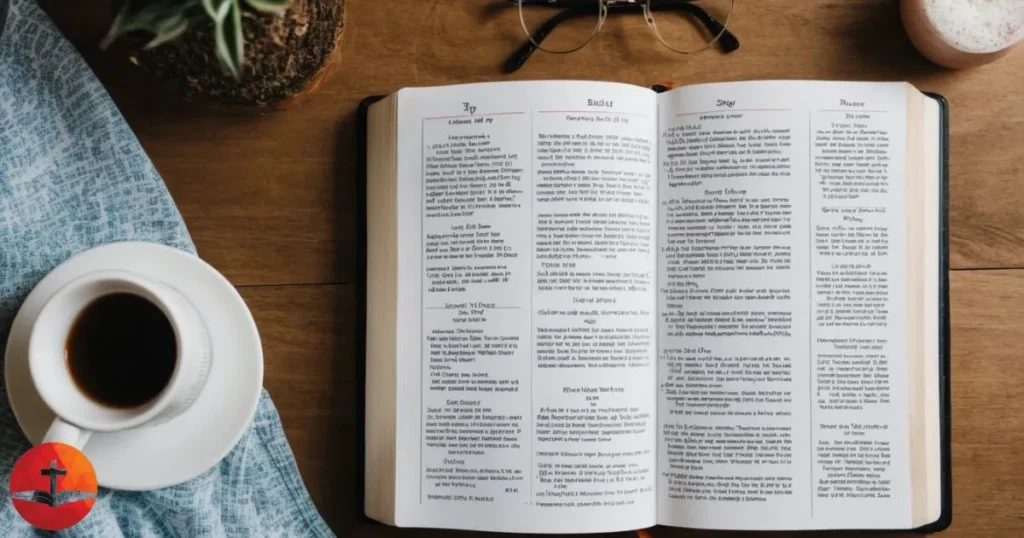How Many Pages Are in the Bible? See the Exact Number Here! Understanding the number of pages in the Bible involves exploring its structure and the different versions available.
Have you ever wondered, “How many pages are in the Bible?” When you’re a curious reader, a student, or someone exploring the world’s most influential book, knowing the Bible’s length can help you understand its structure and content better.
But here’s the thing it’s not a one-size-fits-all answer! The total number of pages depends on the version, font size, and additional features, like study notes or maps.
In this article, we’ll break it all down for you covering different Bible translations, editions, and factors that affect the page count. By the end, you’ll not only know the number of pages but also understand what makes each version unique.
So, if you’re looking for quick facts or planning to dive into the Bible yourself, keep reading to uncover all the details!
How Many Pages Does the Bible Have?

The number of pages in the Bible can vary significantly based on the edition, formatting, and translation used. Generally, a standard Bible can range from about 1,000 to 1,500 pages. Some editions may be longer due to additional commentary, study notes, or supplementary materials, while others may be shorter if they are compact or abridged versions.
The page count may also differ depending on the size of the text and the type of binding. For those looking to read or study the Bible, it’s important to choose an edition that suits their needs for accessibility and comprehension.
What books of the bible have been included?
When discussing the books of the Bible, it’s important to recognize that the Bible is divided into two main sections: the Old Testament and the New Testament. The Old Testament contains 39 books, including historical, poetic, and prophetic texts such as Genesis, Psalms, and Isaiah.
The New Testament, consisting of 27 books, primarily focuses on the life, teachings, and works of Jesus Christ, including the Gospels (Matthew, Mark, Luke, and John) and letters written by apostles like Paul. Together, these form the complete biblical canon for most Christian denominations.
The Format of the Bible

The format of the Bible is traditionally structured in chapters and verses, making it easier to reference specific sections. The Bible is often printed with annotations, study notes, and cross-references that help readers understand context, meaning, and connections between different parts of the text.
Historically, the Bible was first written on scrolls, and over time, it was divided into books, chapters, and verses. The division into chapters was introduced by Stephen Langton in the 13th century, while verses were added in the 16th century by Robert Estienne.
The Specific Version of the Bible

There are many versions of the Bible, each offering unique translations or interpretations of the original Hebrew, Aramaic, and Greek texts. The King James Version (KJV) is one of the most famous and widely used, renowned for its majestic language and influence on English-speaking Christianity.
Other popular versions include the New International Version (NIV), known for its readability and accuracy, and the New Revised Standard Version (NRSV), which is often favored in academic and liturgical contexts.
Each version aims to make the biblical texts accessible and understandable to contemporary readers while maintaining as much fidelity as possible to the original languages.
Defining “Page” in the Bible Context

In the context of the Bible, the term “page” refers not just to the physical layout of a printed Bible but also serves as a metaphor for a portion of scripture, reflecting divine teachings or historical records. However, understanding the concept of a “page” varies depending on the translation, denomination, and formatting of the Bible.
- Physical Context: A “page” in printed Bibles is influenced by the size of the Bible, the font, and the division of chapters and verses. It’s important to note that pages are not standardized across different Bible editions, unlike chapters and verses.
- Symbolic Context: In religious discourse, a “page” may symbolize one segment of divine revelation or a specific teaching that resonates with the reader.
- Practical Usage: For study purposes, Bible “pages” may include study notes, cross-references, or commentary, providing deeper insight into scripture.
Catholic Bibles

Catholic Bibles include additional books and sections referred to as the Deuterocanonical books, which are not found in most Protestant Bibles. This influences the overall structure and content, impacting what a single page might contain.
- Structure and Content:
- Includes 73 books: 46 in the Old Testament and 27 in the New Testament.
- Deuterocanonical books like Tobit, Judith, and 1 & 2 Maccabees are part of the canon.
- Pages may feature liturgical notes or annotations that align with Catholic teachings.
- Layout and Features:
- Catholic Bibles often contain commentaries and references tailored for liturgical use.
- Many editions are designed for easy comprehension, with clear divisions for reading during Mass.
- Examples of Popular Catholic Bibles:
- The New American Bible (Revised Edition) (NABRE)
- The Douay-Rheims Bible
- The Jerusalem Bible
Protestant Bibles

Protestant Bibles differ from Catholic Bibles primarily in their exclusion of the Deuterocanonical books, which they refer to as Apocrypha if included at all. This impacts the overall size and content of the Bible.
- Structure and Content:
- Includes 66 books: 39 in the Old Testament and 27 in the New Testament.
- Excludes books like Tobit and Wisdom, focusing solely on what Protestants consider the Hebrew Bible canon for the Old Testament.
- Layout and Features:
- Protestant Bibles often include study notes, maps, and concordances for individual study.
- Editions focus on ease of reading and personal devotion.
- Examples of Popular Protestant Bibles:
- The King James Version (KJV)
- The New International Version (NIV)
- The English Standard Version (ESV)
Structure of the Bible

The Old Testament
The Old Testament contains texts that are foundational to both Judaism and Christianity. It includes books such as Genesis, Exodus, Psalms, and Isaiah. The Old Testament is divided into several sections: the Torah (Pentateuch), Historical Books, Wisdom Books, and Prophets.

The New Testament
The New Testament focuses on the life and teachings of Jesus Christ and the early Christian Church. It includes the Gospels (Matthew, Mark, Luke, and John), the Acts of the Apostles, the Epistles (letters), and the Book of Revelation.

Scripture: “All Scripture is breathed out by God and profitable for teaching, for reproof, for correction, and for training in righteousness.” – 2 Timothy 3:16
Factors Affecting Page Count

Translation and Edition

The number of pages in the Bible can vary depending on the translation and edition. For example, the King James Version (KJV) might have more pages than the New International Version (NIV) due to differences in font size and formatting.
Format and Print Size

The format of the Bible, including print size, margin width, and inclusion of study notes or commentary, also affects page count. Study Bibles and annotated editions generally have more pages than standard text editions.
Scripture: “The grass withers, the flower fades, but the word of our God will stand forever.” – Isaiah 40:8
Common Page Counts for Various Bibles

Standard Editions

- King James Version (KJV): Typically around 1,200 to 1,500 pages, depending on the size of the print and additional materials included.
- New International Version (NIV): Generally around 1,000 to 1,300 pages, with variations based on the specific edition and format.
Study Bibles and Annotated Versions

- Study Bibles: These can range from 1,500 to 2,500 pages or more, due to additional commentary, maps, and reference materials.
- Annotated Editions: These versions include extensive notes and commentary, often resulting in a higher page count compared to standard Bibles.
Scripture: “Let the word of Christ dwell in you richly, teaching and admonishing one another in all wisdom, singing psalms and hymns and spiritual songs, with thankfulness in your hearts to God.” – Colossians 3:16
Digital Bibles and E-Readers

Formats Digital

Digital Bibles available on e-readers or apps may not have a traditional page count, as they adapt to different screen sizes and user preferences. They typically allow users to adjust text size and layout, affecting the number of “pages” displayed.
E-Readers and Accessibility

E-readers and Bible apps provide features such as search functions, bookmarking, and note-taking, which can enhance the reading experience beyond traditional page counts. These tools help users navigate the Bible more efficiently.
Scripture: “Your word is a lamp to my feet and a light to my path.” – Psalm 119:105
Honey in the Rock: Exploring the Scripture’s Significance
Historical Context and Variations

Manuscript Tradition

In historical contexts, the Bible was originally written on scrolls or codices, not in the paginated format we use today. The transition to page formats occurred with the invention of the printing press and modern publishing.
Variations Across Denominations
Different Christian denominations may use slightly varied versions of the Bible, with different books included or excluded, affecting the total page count. For example, the Catholic Bible includes the Apocrypha, which adds to its length.
Scripture: “These are the things that you shall do: Speak the truth to one another; render in your gates judgments that are true and make for peace.” – Zechariah 8:16
Practical Considerations

Choosing a Bible Edition

When selecting a Bible edition, consider what features are most important to you, such as text size, study notes, or specific translations. The page count is just one factor among many.
Bible Reading Plans

Regardless of the page count, following a Bible reading plan can help you engage with the text systematically. Plans often break down reading into manageable sections, making the Bible more accessible.
Scripture: “I have stored up your word in my heart, that I might not sin against you.” – Psalm 119:11
How many pages is the bible
The number of pages in the Bible varies depending on the version, translation, and formatting of the specific publication. On average:

- King James Version (KJV): Typically around 1,200–1,500 pages.
- New International Version (NIV): Around 1,000–1,300 pages.
- Catholic Bible (with Deuterocanonical books): Generally around 1,400–1,800 pages.
The total page count is influenced by factors such as font size, page layout, and whether footnotes or commentary are included.
Bible page count

he Bible‘s page count can vary depending on factors like the version, publisher, font size, and formatting. Here’s a general breakdown for some commonly used versions:
- King James Version (KJV): Typically ranges from 1,200 to 1,600 pages.
- New International Version (NIV): Around 1,100 to 1,400 pages.
- English Standard Version (ESV): Usually 1,000 to 1,300 pages.
- Catholic Bible (with additional books): 1,400 to 2,000 pages, depending on font and format.
- The Passion Translation (TPT): A modern, paraphrased translation aimed at conveying the Bible’s emotional and spiritual essence.
- Douay-Rheims Bible: A traditional Catholic translation from the Latin Vulgate, preserving formal and archaic language.
- Young’s Literal Translation (YLT): A highly literal, word-for-word translation striving to reflect the original Hebrew and Greek texts.
- Today’s English Version (TEV) or Good News Bible (GNB): A simplified, easy-to-read translation designed for clarity and accessibility.
These totals cover 66 books in Protestant versions and 73 books in Catholic versions, including both the Old Testament and New Testament.
How Many Pages Are in the Bible?
The average Bible has about 1,200 pages, but specific editions may range from around 1,000 to over 1,800 pages depending on the version, formatting, and additional materials.
| Bible Translation | Number of Pages | Notes |
|---|---|---|
| King James Version (KJV) | 1,200 – 1,500 | Varies by font size, page format, and inclusion of study aids. |
| New International Version (NIV) | 1,100 – 1,300 | Commonly printed in a compact and reader-friendly layout. |
| New Living Translation (NLT) | 1,100 – 1,400 | Designed for readability with modern language. |
| Douay-Rheims Bible | 1,400 – 1,600 | A traditional Catholic Bible with additional books (Deuterocanonicals). |
| The Passion Translation (TPT) | 1,000 – 1,200 | Focuses on New Testament, Psalms, Proverbs, and Song of Songs in most editions. |
| Good News Bible (GNB/TEV) | 900 – 1,100 | Features simple language and often includes illustrations. |
| Young’s Literal Translation (YLT) | 1,200 – 1,400 | Known for its word-for-word translation, affecting overall page count. |
Five Popular Bible Verses
1. John 3:16
“For God so loved the world that he gave his one and only Son, that whoever believes in him shall not perish but have eternal life.”
2. Jeremiah 29:11
“For I know the plans I have for you,” declares the LORD, “plans to prosper you and not to harm you, plans to give you hope and a future.”
3. Romans 8:28
“And we know that in all things God works for the good of those who love him, who have been called according to his purpose.”
4. Philippians 4:13
“I can do everything through him who gives me strength.”
5. Proverbs 3:5
“Trust in the LORD with all your heart and lean not on your own understanding.”
These verses are cherished for their timeless messages of love, hope, faith, and encouragement, offering guidance in various aspects of life.
Key Factors Affecting Page Count:
- Font Size and Style: Larger fonts increase page count.
- Paper Thickness: Thicker paper leads to more pages.
- Content Included: Study notes, maps, concordances, and Apocryphal books can add pages.
- Translation Focus: Some translations (e.g., TPT) include only parts of the Bible, reducing page count.
What is the Average Number of Pages in the Bible?

The average number of pages in the Bible can vary depending on the version, translation, font size, formatting, and whether it includes supplementary materials like commentary or maps. However, here are some general estimates:
- Standard Bibles (e.g., King James Version, New International Version): Usually range from 1,000 to 1,500 pages.
- Compact or Pocket Bibles: Often have around 700 to 900 pages, as they use smaller fonts and thinner paper.
- Study Bibles: These can exceed 2,000 pages due to added features like footnotes, cross-references, and explanatory content.
The Bible typically includes 66 books (Protestant canon) divided into the Old Testament (39 books) and the New Testament (27 books), but the page count can differ across versions. For example, Catholic Bibles include additional books, known as the Deuterocanonical books, which add more pages.
How Long Will It Take to Read the Bible?

The time required to read the entire Bible depends on reading speed. An average reader can complete it in 70 to 80 hours. If reading one chapter per day, it may take over three years. A dedicated reader spending 30 minutes daily can finish it in about a year.
Are There 72 or 73 Books in the Bible?

The number of books depends on the Christian tradition. The Protestant Bible has 66 books, the Catholic Bible includes 73 books, while some Eastern Orthodox Bibles contain more books, depending on their canon.
Which Bible Has All 81 Books?
The Ethiopian Orthodox Tewahedo Bible contains 81 books, making it one of the most extensive biblical canons. It includes the standard Old and New Testament books, along with additional texts like the Book of Enoch and Jubilees.
How Many Pages Are in the Bible (NIV, KJV, NKJV, and Average Count)?
The total number of pages in the Bible varies based on the translation, font size, and formatting:
- NIV (New International Version): Around 1,200–1,500 pages
- KJV (King James Version): Typically 1,100–1,400 pages
- NKJV (New King James Version): Between 1,200–1,500 pages
- Average Bible Length: Most versions range from 1,000 to 1,500 pages, depending on the publisher.
Why Do Bibles Have Different Numbers of Pages?
The number of pages in a Bible can vary greatly due to factors like translation, font size, formatting, and the inclusion of additional materials. Some editions include study notes, concordances, maps, or commentaries, which increase the page count. Similarly, smaller print Bibles may have fewer pages compared to large-print editions.
How Many Chapters Are in the Bible?

The Bible contains 1,189 chapters in total—929 in the Old Testament and 260 in the New Testament. The chapter divisions, added later for easier navigation, have remained consistent across most translations. However, chapter lengths can vary significantly depending on the book and translation style.
How Many Pages Are in the Catholic Bible?
The Catholic Bible contains 73 books, including the 46 books of the Old Testament and 27 books of the New Testament. The page count varies based on factors like font size, formatting, and additional content (e.g., commentary or study guides).
- Standard editions: Approximately 1,200 to 1,800 pages.
- Large-print or study editions: Often exceed 2,000 pages due to extra features.
How Many Pages Are in the Bible Old and New Testaments

The total number of pages in the Bible depends on whether it’s a Catholic or Protestant Bible and the edition type. Here are general estimates:
Old Testament
- Around 700 to 1,000 pages in most editions.
New Testament
- Typically ranges from 300 to 500 pages.
Complete Bible
- Catholic Bible (73 books): 1,200 to 1,800 pages.
- Protestant Bible (66 books): 1,000 to 1,500 pages.
Factors Affecting the Page Count
- Translation: Some translations are more concise, while others are wordier.
- Font Size: Smaller fonts reduce page count; large-print editions increase it.
- Formatting: Study Bibles or Bibles with commentary include additional pages.
- Publisher: Different publishers use varying layouts and designs.
1. What is the Bible?

The Bible is a sacred text in Christianity that contains the teachings, stories, and laws believed to be inspired by God. It is divided into two main sections: the Old Testament (which contains religious history, laws, and prophecies from before the birth of Jesus) and the New Testament (which focuses on the life, teachings, death, and resurrection of Jesus Christ, as well as the teachings of His apostles). Christians regard the Bible as the Word of God and a guide for living a righteous life.
Trivia notes:
- The Bible is regarded as the most translated and distributed book in the world.
2. The Average Number of Pages Among Different Translations
The number of pages in the Bible can vary based on the translation and the format. However, most traditional translations of the Bible (such as the King James Version or NIV) contain around 1,000 to 1,500 pages. The total length can differ depending on the inclusion of footnotes, cross-references, or other study aids.
Trivia notes:
- Some Bibles are designed for specific purposes, like pocket-sized Bibles or study Bibles, which can add or reduce the number of pages.
3. How Many Books are in the Bible?

The Bible consists of 66 books in total. This is divided into:
- 39 books in the Old Testament (Hebrew Bible).
- 27 books in the New Testament.
Some Christian traditions, such as the Catholic Church, include additional books known as the Deuterocanonical books, bringing the total number of books to 73.
Trivia notes:
- The Bible contains a variety of literary genres, including history, poetry, prophecy, wisdom literature, and letters.
4. What is the Longest Book in the Bible?
The longest book in the Bible is the Book of Psalms. It contains 150 chapters and is part of the Old Testament. Psalms is a collection of songs, prayers, and poetry expressing a range of emotions, from praise to lament.
Trivia notes:
- The Book of Psalms is often referred to as the Hebrew hymnbook, and many of its passages are used in worship and liturgy.
5. The Entire Bible Points to Jesus Christ

Christians believe that the entire Bible points to Jesus Christ in both the Old Testament and New Testament. The Old Testament contains prophecies and types (symbols) that foreshadow Jesus’ coming, while the New Testament presents Jesus as the fulfillment of these prophecies. In this view, the Bible’s overarching message is about God’s plan for salvation through Jesus Christ.
Trivia notes:
- Jesus Himself mentioned that the Scriptures testify about Him, particularly in the Gospel of John (5:39) and Luke (24:27).
6. Why Should We Read the Bible Daily?
Reading the Bible daily is encouraged for several reasons:
- Spiritual Growth: Regular Bible reading helps strengthen one’s faith and deepens understanding of God’s will.
- Guidance and Wisdom: The Bible provides practical wisdom for living a righteous life and making decisions.
- Strengthening Relationship with God: Daily reading fosters a closer relationship with God, allowing individuals to hear His voice through the Scriptures.
- Encouragement and Hope: Many find comfort in the Bible’s messages of hope, love, and encouragement, especially during difficult times.
Trivia notes:
The Bible is often referred to as the “Living Word” because it is believed to be timeless and relevant in all circumstances.
On Average How many pages are in the Bible

On average, the Bible contains around 1,200 to 1,500 pages, depending on the version, translation, and formatting.
- A standard Protestant Bible (with 66 books) typically has 1,200–1,300 pages.
- A Catholic Bible (with 73 books) usually has 1,400–1,500 pages.
- Some study Bibles or large-print editions can have 2,000+ pages due to additional commentary and footnotes.
The total page count varies based on font size, margins, and whether it includes additional content like introductions, concordances, or maps.
How Many Pages is the Bible NIV

The NIV Bible (New International Version) is one of the most popular translations worldwide. It is used by millions of readers because of its easy-to-understand language and accurate translation from the original texts.
When it comes to the number of pages, the count can vary depending on:
- Edition or Publisher: Different publishers may use unique font sizes, page layouts, or formats.
- Font Size and Style: Large-print Bibles have more pages than regular editions.
- Additional Features: Study notes, maps, introductions, or appendices can add extra pages.
On average, a standard NIV Bible has 1,100 to 1,400 pages, depending on the edition. Here’s a breakdown:
- Compact or Pocket Edition: Around 900–1,200 pages.
- Standard or Regular Edition: Around 1,100–1,300 pages.
- Study Bible Edition: Around 1,500–2,000 pages, due to commentary and references.
Why Does the Page Count Vary?

- Some editions exclude Apocryphal Books (found in Catholic Bibles but not in Protestant versions).
- The page count depends on whether the Bible includes both the Old Testament (39 books) and the New Testament (27 books).
- Publishers may condense the content with smaller fonts or remove extra features.
Fun Fact
The Bible isn’t measured just by pages—it contains 783,137 words in the NIV and takes an average reader about 70 hours to complete reading!
How Many Pages Are in the Book of Mormon?

The Book of Mormon typically has around 531 pages, but the number can vary depending on the edition, font size, and formatting. Published by The Church of Jesus Christ of Latter-day Saints, it is divided into smaller books such as 1 Nephi, Alma, and Moroni, offering spiritual guidance and teachings.
Despite its page count, the focus of the book is not on its length but on its message of faith, repentance, and Jesus Christ. Readers are encouraged to study it prayerfully to gain a deeper spiritual understanding.
How Many Pages Is the Torah?

The Torah, consisting of the first five books of the Hebrew Bible (Genesis, Exodus, Leviticus, Numbers, and Deuteronomy), has its page count vary widely based on formatting and translation. In most printed versions, it ranges between 200 to 400 pages.
In Jewish tradition, the Torah is read from a handwritten scroll, where page numbers are not applicable. However, modern printed versions make it accessible for study and daily use. The Torah serves as the foundation for Jewish law, ethics, and spiritual teachings.
How Many Pages Is the Bible in English?

The number of pages in the Bible varies depending on the translation, font size, and formatting. A standard King James Version (KJV) Bible typically has 1,200 to 1,500 pages. Modern translations like the New International Version (NIV) or English Standard Version (ESV) may differ slightly in page count due to variations in paragraph spacing, footnotes, and study materials included.
Despite differences in page count, the content remains the same, covering 66 books—39 in the Old Testament and 27 in the New Testament. The page length is not as important as the depth of spiritual wisdom, history, and teachings found within the Bible.
How Many Pages Is the Entire Bible?

The entire Bible, when printed in a standard format, usually ranges between 1,200 and 2,000 pages. Some versions, such as study Bibles, can exceed 2,000 pages due to additional commentary, maps, and reference materials. If printed in a large font edition for easy reading, the Bible may extend to 2,500 pages or more.
Page count also varies by publisher and printing style. A compact or pocket Bible may have fewer pages with thinner paper, while a parallel Bible—which includes multiple translations side by side—will have significantly more pages. Regardless of page length, the Bible remains one of the most influential and widely read books in history.
How Many Pages in the Holy Bible?

The Holy Bible’s page count depends on the edition and whether it includes additional content such as concordances, study notes, or introductions to each book. A typical print Bible has about 1,200 to 1,600 pages, while digital or audiobook versions are measured by chapters rather than pages.
Even though the physical pages vary, the Bible’s message remains unchanged. It is a book filled with wisdom, guidance, prophecy, and inspiration that has shaped cultures and lives for centuries. Whether reading a shorter or expanded version, the Bible’s impact transcends its physical length, offering eternal truth to those who seek it.
Answers to Key Questions.
1. How many pages are in the King James Bible?
The King James Bible typically has around 1,200 to 1,600 pages, depending on the font size, edition, and formatting of the publication.
2. How many words are in the Bible?
The King James Version (KJV) of the Bible contains approximately 783,137 words, though the exact number may vary slightly based on formatting differences.
3. How many verses are there in the Bible?
The Bible has a total of 31,102 verses, with 23,145 verses in the Old Testament and 7,957 verses in the New Testament.
4. How many books were removed from the Bible?
A total of 14 books, commonly known as the Apocrypha, were removed from the Bible by Protestant reformers in the 16th century.
5. What books were removed from the Bible and why? Where can I find them?
The books that were removed include 1 Esdras, 2 Esdras, Tobit, Judith, Additions to Esther, Wisdom of Solomon, Ecclesiasticus (Sirach), Baruch, Letter of Jeremiah, Prayer of Azariah, Susanna, Bel and the Dragon, Prayer of Manasseh, and 1 & 2 Maccabees.
They were excluded from Protestant Bibles because they were not considered divinely inspired or did not align with Jewish or Protestant theology. You can still find these books in Catholic and Orthodox Bibles, as well as in standalone editions of the Apocrypha.
Conclusion
The page count of the Bible can vary widely depending on translation, edition, and format. While traditional print Bibles typically range from 1,000 to 2,500 pages, digital versions offer flexibility in text display.
Understanding the structure and factors influencing page count can help you choose the right Bible for your needs, whether for study, devotion, or personal reflection. Ultimately, the significance of the Bible transcends its physical dimensions, focusing on the profound spiritual and historical messages it contains.
Related Posts:
Biblically Accurate Demons and Angels
Day Chronological Bible Reading Plan for Spiritual Growth
Heartfelt Prayer for My Husband’s Strength and Blessings
Powerful Parables of Jesus to Inspire Your Faith
Bible Verses About Thankfulness to God
Daily Prayer for Peace, Strength, and Guidance
Closing Prayers Uplifting Endings for Bible Study
Prayers for Him Heartfelt Words to Lift and Encourage

Hi! I’m Zadie Smith, the writer behind BiblePulze.com. I’m passionate about exploring and sharing insights on Bible topics in a way that’s easy to understand. Whether you’re looking to dive deep into scripture or just want to learn more about its teachings, I aim to make the Bible accessible and engaging for everyone.

![How Many Pages are in the Bible? Guide [2025-2026] how many pages are in the bible](https://biblepulze.com/wp-content/uploads/2024/08/how-many-pages-are-in-the-bible-1024x538.webp)